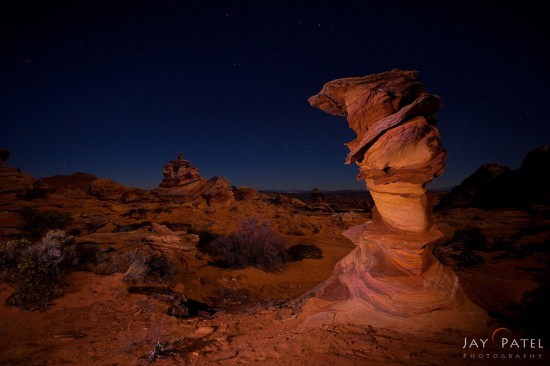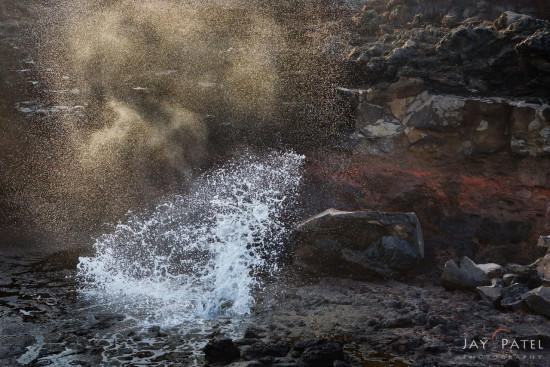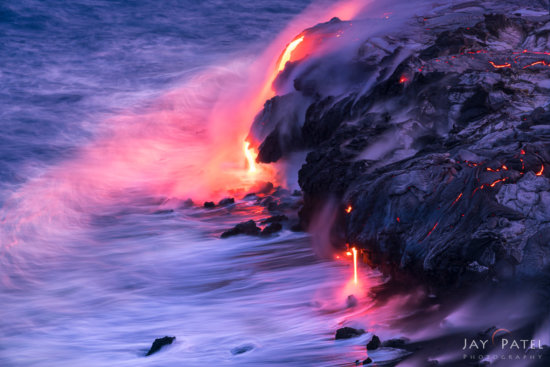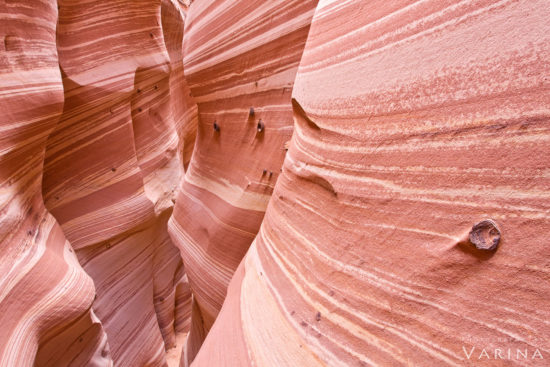Full Frame or Crop Factor Camera?
If you are living in a social media bubble, you’ve likely heard or read something like this: “ALL pros shoot with a full-frame camera. So why would anyone want to use a crop factor camera?”
I admit that I may be stereotyping but the prevailing attitude in the photography world is that you need a full-frame camera to be serious photographer. Over the years, we’ve heard a number of reasons to use full-frame cameras including:
- Most pros use full-frame cameras
- A full-frame camera is better than a crop factor camera
- A full-frame camera has better dynamic range or tonality
- My photos come out better on a full-frame camera
Social media bubbles rarely represent reality. Our reality is that we almost always carry both a crop factor camera and a full-frame camera. Most professional photographers do not hesitate to grab a crop factor camera when the situation calls for it. Here are few specific situations where we tend to use a specific type of camera.
Low Light Photography
Because of its larger pixel size compared to its crop-factor counterpart, a full-frame camera is typically associated with lower noise levels at higher ISO settings. So, our first choice for shooting low-light or night photography is the full-frame camera because of its high ISO capabilities. You also need a steady tripod to capture low lit, long exposure images such as these.
Large Fine Art Prints
Over time, both crop factor and full-frame camera resolution capabilities keep improving. But at any given time with similar technology, full-frame cameras have more resolution than crop sensor cameras. The reason is pretty simple – large sensors on a full-frame camera can accommodate more pixels of the same or comparable technology. We use a remote release and a tripod to get everything sharp.
Shooting Wildlife or Far Away Subjects
One of the biggest drawbacks of the crop factor camera is also its biggest advantage – the multiplier effect. The crop sensor increases the effective focal length of the lens you’re using by a factor of 1.3 to 1.6, depending on the camera. The crop factor makes a wide-angle lens longer (an 18mm lens with a 1.6 crop factor has an effective focal length of 28mm) and it makes a long lens even longer (a 400mm lens on a 1.6x crop camera has an effective focal length of 640mm). Because of this, a crop factor camera is an excellent choice when shooting wildlife or far-away subjects.
Note: For those of you who are technical minded a crop factor body will increase the magnification of the lens by 1.3 to 1.6 factor. This will not change perspective like longer lenses do. This is the reason why we use term effective focal length.
Getting Close to Your Subject
When using a wide-angle lens on a crop factor body, the near DOF limit is much closer than the equivalent focal length lens on a full-frame camera. As a result, a crop factor camera can get closer to the subject than a full-frame camera for the same field of view. Crop factor cameras are great when you want to get really close to your subject and still shoot wide. We were awfully happy to have a crop factor camera in Utah’s slot canyons!
So… the choice between a crop factor camera and a full-frame camera comes down to the photography situation. There’s no “right” answer. We personally like to have one of each so that, when we are in the field, we can choose the right camera for the job.









“Crop factor cameras are great when you want to get really close to your subject and still shoot wide. We were awfully happy to have a crop factor camera in Utah’s slot canyons!”
While and interesting statement I would suggest that “reality’ is a bit different.
Your stated assumption is the “Field of View” is the same …. which would mean
Cannon 40D @ 17 mm f/16 17mm x 1.6 = 27 mm
Close focus distance at a hyper focal distance of 4 ft == 1′ 9.2” to ∞
So lets compare with a full frame option using a 14-24mm lens
Nikon D800E @ 24 mm f/16
Close focus distance at a hyper focal distance of 5 ft == 2′ 2.7” to ∞ a difference of 5.5 inches
Close focus distance for a focal distance of 4 ft == 2′ to 1000′ a difference of 2.8 inches
1000 feet is more that enough to cover the distance available in the slot canyon.
So in reality is 2.8 inches going to make much of a difference? … I think not.
But wait! …. the 14-24 mm lens is at its long end. so what if we zoom to 14 mm?
Nikon D800E @ 14 mm f/16
Close focus distance for hyper focal distance of 4 ft == 1′ 0.1” to ∞
a difference of 9.1 inches in favor of The full frame camera at 14mm and wider angle of view.
24mm angle of view == 87 degrees (about the same as 17mm focal length on a crop sensor)
14mm angle of view == 114 degrees
Depth of field has nothing to do with the camera (full frame vs crop sensor) it is entirely dependent on the focal length.
For a given focal length the full frame camera will have a wider field of view than a crop sensor which I contend is what is useful in close surroundings (like the slot canyon).
The data was provided by http://www.dofmaster.com/doftable.html
The distances will be different depending on the equipment selected.
If you have more than one camera … then you make a choice based on what image you want to capture.
As was stated in the article:
“the choice between a crop factor camera and a full-frame camera comes down to the photography situation”
I would add that the right camera is the one in you hand! Go take pictures and don’t worry about what equipment you don’t have!
Your observation is not wrong but your interpretation of what we are saying is incorrect. Full Frame camera does let in more light per entire frame as full frame covers more area….and for a similar technology it will offer more pixels. So given the statement we made in the article: “The reason is pretty simple – large sensors on a full-frame camera can accommodate more pixels of the same or comparable technology.
In either case the article is more about use case scenario than to debate what camera has how many mega pixels with what technology.
Yep…absolutely correct. And this is the reason why we choose to use term “Effective Focal Length” rather then just state that it increases the “Focal Length”? The article is not meant to explain physics of what happens in a crop body…but how we choose to use the crop body.
And yes we do regularly shoot wildlife with a crop body on long lens. While it is true that you can produce the same results by cropping a 24MP 1.5x crop camera will require 54MP camera to produce the same magnification. Not to mention that the buffer and frame rate at such high resolution will be challenging to keep up with frame rates needed for wildlife photography.
While your observation is correct…it focuses way too much on technical details while the article is written from a general usage perspective. In either case I will add a note to the bottom of the article for those that are technical minded.
Thanks Jay
Quite interesting discussion now in 2017; indeed there are those situations that lead to the type of sensor. I have been shooting both Canon 5Dii and 7DMii and except for those mentioned situations, lens are much more decisive. However I wanted to reduce the weight of my travel bag and got a Sony A6300 with a Zeiss 4/16-70, a 4/10-18 and 55-210 zoom, obviously “cropped”, yet in FF my reach is from 15mm to 315mm. Hey man, the results are impressive, beyond that the whole package is 1.3 Kg, much less than just the Canon body and 1 lens. The quality of pictures are magnificent, this small camera delivers outstanding low noise levels in dark situations, very fast and effective focus, color (and depth) are the best I have seen. I might sell my Canon equipment by year end. Do I need a FF, I guess not for now.
I like it how this discussion is ended with a very bright comment.
Why not crop your full frame pictures afterwards!? Haha that’s really funny because it is completely equivalent.
Offcourse the crop camera has more megapixels squeezed in the smaller area of the sensor so it would have more information in its picture.
On the other hand, when you don”t crop your FF image, which in general you shouldn’t, the lower pixels density, better spacing of puxels, results in better image quality based on less noise.
Still.. a crop camera cam make high res wide landscape pictures with nearer dof.. Thank you all
Why not simply crop the full frame file image? Since the actual size (scale) of objects being photographed is exactly the same on both sensors there will be no loss of image quality. An orange whose image measures 2 cm diameter on a crop photo taken with a 200mm lens (‘effective focal length 320mm’ – although I question the use of this term) will also measure 2cm on a full frame image, the only difference being that there will be more surrounding the orange.
I’ve been advocating for the benefits of APS-C sensors for years! They are great for sports! I can pay a fraction of the price for a 300mm f/2.8 vs the 400mm f/2.8 and 600mm f/4 and essentially get the same thing because of my crop factor. I have a 1.5x crop factor.
So 300mm f/2.8 becomes 450mm f/2.8 and with a 1.4x teleconverter it becomes a 630mm f/4! And its all wrapped up in one lens!
Oh wait, but what if I need a 300mm f/2.8. Well, instead I have a 105-300mm f/2.8 in my $800 Sigma 70-200 because of the crop factor. Even better!
It’s good to see someone else agreeing with us on this one, Jordan! ;) I love my crop factor camera – and I wouldn’t part with it for the world. Of course, there’s a time and a place for full frame sensors as well… and I love my full frame camera too. I think it’s important to understand the capabilities of each camera and lens so that you can choose the right combination for whatever job arises.
I don’t mean to argue here, but you’re making the case for a crop frame camera giving better near limit DOF, not really cost of anything. My contention is that you don’t gain near limit DOF with a crop frame camera as you say. If you have the 10mm lens and you want better near limit DOF, you put that lens on your full frame camera (which gives you even wider FOV if you want it), and leave the crop frame in your bag, no? If you happen to have a 16mm on a 5Dmkii and a 10mm on a 7D and you don’t want to change lens/body combination, then I guess the 7D will give you slightly better near limit DOF. And, as you say, if you’re shooting really wide, the full frame body let’s you go much wider.
Your argument is absolutely correct, Jim – until you take into account the fact tthat Canon’s 10-22mm lens doesn’t fit a full frame body.
As for my comments about cost, I was simply responding to your comment – “If so, doesn’t that just mean you have to buy wider and more expensive glass for the crop frame camera if you want that wide?”
guys I think you make the same mistake as most people do.
100mm lens that you put on the crop camera is still 100mm lens. It does its think on the rays that it does on the full frame.
The terrible thing that being said that you call it is that lens is and effective 140mm lens etc IT is not. It has the same FIELD of view as an 140mm on full frame. It does not behave as 140MM lens..
THe compression and all properties it has is line 100mm lens no matter where you put. Yes you have an advantage if you want to put as many megapixels as possible on a specific frame but nothing more.
I personally chose lenses not for the field of you but the compression they achieve. Before I pick up an 84 or 100 or 200 I decide what is the perspective I want .
Of course if I have a crop camera then I need to be at different distance from the subject to have the same coverage.
I think people are dreaming or just misinformed if the think that they can use crop camera and their 200 2.8 becomes 300 2.8 IT DOES NOT. The perspective of the 20mm lens different that the 18mm I would choose a lens depending on the perspective that I want from that lens first and then I think about cropping. etc etc.
Your point is a good one, John. It’s important to choose your lens based upon the scene you intend to photograph, and how you want your finished photograph to look.
When you mention “compression”, do you mean distortion?
You say “When using a wide-angle lens on a crop factor body,the near DOF limit is a lot closer than the equivalent focal length lens with a full frame camera.” Don’t you have that backward? To check, I looked at this website and simply changed the camera from a Canon 5D MKii to a 7D. The near limit is closer on the 5DMKii. I guess “a lot closer” is subjective also.
Or are you trying to say that for example a 7D with a 10mm will have a closer near limit than a 5D with a 16mm? If so, doesn’t that just mean you have to buy wider and more expensive glass for the crop frame camera if you want that wide? I don’t know, I think I’d prefer the full frame with a 16 in this case. Wide and fast gets really expensive.
When we talk about near DOF limits, we are talking about equivalent focal lengths. So yes, we mean that the near limit is closer on the crop-factor camera. Purchasing a crop factor camera generally costs quite a bit less than purchasing a full frame camera. Canon’s 7D body is priced at about $1500, while the Canon 5D Mk II is priced around $2200. And as far as the lens goes, Canon’s 10-22mm lens (which is not included in the Luxury series despite the fact that it is L-series glass) is selling for around $800 right now. The 16-35mm lens is selling for about $1500. That’s a heck of a price difference in my opinion. Of course, you can argue that not everyone needs a lens that wide… and the mid-range lenses are more expensive as they get wider. That’s certainly true. On the other hand, near DOF limit is something you are more likely to be concerned with if you are shooting really wide.
I completely agree with everything Varina has said in the comment and wanted to add my own thoughts. Rather than trust a website I would recommend you do the research and find out for yourself.
Using optical equations, hyperfocal distance and Near DOF Limit based on a given COC does NOT depend upon crop factor but depends ONLY upon aperture and focal length of the lens. So, when a website gives you different DOF for the same focal length lens they are likely changing the COC between sensor sizes with an assumption that a crop sensor “Needs” smaller COC than a full frame. It is also true that pixel size, anti aliasing filter, lens imperfection all effect sharpness and often time more noticeably than COC. So what is the answer? Rather than account of all possible factors for our workflow in the field relies selecting one COC and then framing out shots based upon that COC. So, 10mm lens will appear as 16mm lens with a crop factor camera, but will be able to have significantly closer near DOF.
I too agree with everything Varina says in the immediately above comment.
Jay, the reason I came to this site was because you invited me from the list that we’ve discussed this previously. I meant to include my source in my post when I said “…this website…”. Here’s that website address: http://www.dofmaster.com/equations.html
I looked at other websites that gave DOF calculations just to make sure they were all “in sync”. I found that they were all close, and ALL of them showed that a crop frame camera gives LESS near DOF than a full frame in every instance of every F/stop that I entered. And what makes you think I didn’t do my research? Yes, the equations used in his calculation obviously use CoC. I don’t have his numbers, but Wiki claims APS-H is .023 vs full frame .029. I guess every other of the calculations must use similar equations with similar CoC values, as they all show similar results; Crop frame gives less near DOF.
Personally, this was the first time I ever actually used a DOF calculator other then for entertainment purposes. For my purposes, I use the DOF scale on my lenses. If I can’t determine DOF from my lens, I wing it. I know how my aperture effects my DOF, and the IQ of the overall image. Do you actually “select” your COC in the field? What does that mean? In the field, I choose an aperture and a focus spot to achieve the DOF that I want.
So, do you have evidence to support your last statement? And what does “significantly” mean? What % of the in-focus image are you saying is significant? Since I have both a 7D and 5DMkii I can set up an experiment to test your assertions. But, what kind of distances are you talking? Since Varina mentioned the slot canyons, I would assume you’re talking in that case from as close as possible to the lens to maybe 30 feet? I don’t have a 10mm lens, but I have a 16-35 so I think I can approximate close enough to the 10-16, using 16 and 25.6 (or as close as I can get to that).
Hi Jim – I think the problem we’re running into here is that this post wasn’t meant to be a discussion of hyperfocal distance, circle of confusion, or specific calculations. Instead, we were simply making a point that having a full frame camera isn’t all that important. We often get questions from people who believe that their full frame camera is superior – or that a crop factor camera isn’t good enough for a professional photographer.
Without going deeply into the details of hyperfocal distance – it’s important to realize that the “standard” value for circle of confusion was set during World War II. Since then, camera technology has improved significantly. In most cases, a standard CoC of 0.03mm simply isn’t good enough anymore. Additionally, it’s a common misconception that using a crop factor camera means you should use a different CoC value. The implication is that a person using a crop factor camera doesn’t need images that are as sharp as a “professional” using a full frame camera. In my opinion, that’s ridiculous. No matter the skill level, no matter the camera, we all want sharp pictures. “Acceptably sharp” is certainly a difficult concept to define… but most photographers would agree that they want their images to be sharper than photographs taken in the 1940s. We generally recommend using a CoC of 0.02mm. The difference may seem small, but it can mean the difference between a blurred foreground and one that isn’t sharp enough.
For comparison, lets take the example of a 16mm lens at f/16. Remember that it doesn’t matter if the lens is on a full frame camera or a crop factor camera. The hyperfocal distance remains the same regardless. So… at f/16, with a CoC of 0.02mm, my 16mm lens will give me a hyperfocal distance of 0.8m. If I set my focus point at 0.8 meters, my image will be acceptably sharp from a near limit of 0.69m to infinity.
Now, let’s use the old standard of 0.03mm for the CoC value. At f/16, the same 16mm lens will give me a hyperfocal distance of 0.53m. Everything from my near limit of 0.47m to infinity will be “acceptably sharp” but only according to the old WWII standard. Is that really sharp enough?
My point here is that CoC values matter. And that a photographer should choose a CoC based upon what he/she considers to be “acceptably sharp”. I often want something in my foreground very sharp – and I also want to get it as close to my lens as possible so that the subject seems as large as possible in relation to objects that are further away. The difference between a near limit of 0.47m and 0.69m may not seem like much – but I need to know exactly where my image will be sharp. If I calculate using the old standard and assume that I can get sharp focus on an object 0.47m from my sensor, I’m going to be disappointed. Instead, I use the “professional standard” CoC value. That way, I know that nothing within my frame will be “acceptably sharp” if it is closer to my lens than 0.69m.
Now, what if I want my foreground object even closer to my lens? I can adjust my aperture – but I don’t like to shoot at an aperture narrower than f/16… and I’d prefer to go with f/8 if possible. Instead, I’ll pull out my crop factor body and a 10-22mm lens. (Of course, if I could put my 10-22mm lens on my full frame body, that would be great. But I can’t.)
At f/16, with a CoC of 0.02mm, my hyperfocal distance for the 10mm lens is 0.31m. Everything from my near limit of 0.29m to infinity will be acceptably sharp if I set my focus point 0.31m from my sensor. The difference between a near limit of 0.69m for my 16mm lens and a near limit of 0.29m for my 10mm lens is enough to make a difference in the field. That small difference may seem insignificant to you – but a few centimeters can mean the difference between a sharp image and a blurry one when I’m shooting wide.
Ahh 7D or 5DMkII. Are the majority of your landscape shots taken with full frame camera?
No, Alistair. I’d say about half of our wide-angle landscape shots are taken with the full frame camera. Maybe less than that. The reason is that we can get really close to the subject with a focal length of 10mm on our crop factor camera, and still get the entire frame acceptably sharp. That’s hugely important for us.
Great post, it’s nice to hear a well thought out and nuanced view on gear.
Thanks Tim!